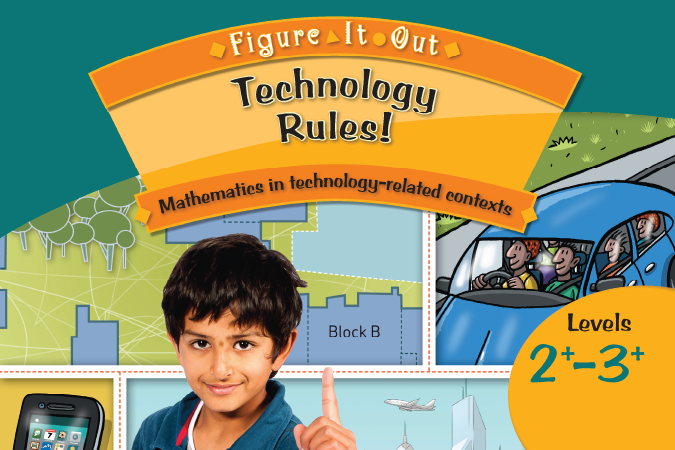Shipping container space
This is a level 2 activity from the Figure It Out series. A PDF of the student activity is included.

About this resource
Figure It Out is a series of 80 books published between 1999 and 2009 to support teaching and learning in New Zealand classrooms.
This resource provides the teachers' notes and answers for one activity from the Figure It Out series. A printable PDF of the student activity can be downloaded from the materials that come with this resource.
Shipping container space
Achievement objectives
GM2-7: Predict and communicate the results of translations, reflections, and rotations on plane shapes.
Description of mathematics
Reflecting, rotating, and translating a shape changes its position, but its area remains the same. Students play a game that involves placing shapes of different areas inside a "shipping container".
This game can be easily adapted to incorporate the language of geometry (reflection and rotation).
Required materials
- Figure It Out, Technology Rules!, Levels 2+–3+, "Shipping container space", page 11
- colouring-in pens or pencils
- 3 classmates
- a paper clip
See Materials that come with this resource to download:
- Shipping container space game (.pdf)
- Shipping space CM (.pdf)
Activity
In this game, students use reflection and rotation to position shapes inside a rectangle.
Ask the students to identify whether they are rotating or reflecting the shapes shown on the spinner before they add them to the shipping container. Students who find this challenging could make paper copies of the shapes. If the paper copy needs to be flipped over, the transformation is a reflection.
The pieces on the spinner in the game can be used as a basis for further exploration by asking the students to:
- investigate how many different ways they can make the F shape using the smaller pieces
- combine the pieces to make a 5 x 5 square. Can they find more than one way to do this?
Have the students draw a 6 x 6 square. They take turns colouring in squares using the shapes on the spinner. Each player can only use each shape once. The winner is the last person to be able to place a shape within the square.
This alternative game can be adapted to make it more collaborative. Students still take turns placing or colouring in a piece, but the challenge is to have as few squares left uncoloured as possible.
The shipping container game and its variations provide a good opportunity to have the students listen actively to each other and build on others’ ideas. The key competency, "relating to others", involves recognising when to compete and when to cooperate.
Technology-related student activities
- Try to fit as many blocks as possible into a shoebox.
- Try to wrap a present (for example, a book) with as little wrapping paper as possible.
- Examine commercial packaging, such as for food items. How well do the contents fit into the packages? Do any appear to be misleading—are there fewer contents than first thought?
- Draw a plan of the classroom and suggest rearrangements of the furniture. What would need to be considered? (safety, ergonomics, ease of access, etc.)
Exploring the technology-related context
Optimisation is important for designers and manufacturers. Efficient use of materials, time, and energy all have an impact on decision-making. Over time, storage and packing technology has changed, including the introduction of containers. (Try an Internet search on the history of freight containers.)
Packaging serves several functions. It stores and protects items, advertises them, and disseminates product information.
A game involving the placement of various shapes inside a rectangle.
The quality of the images on this page may vary depending on the device you are using.


